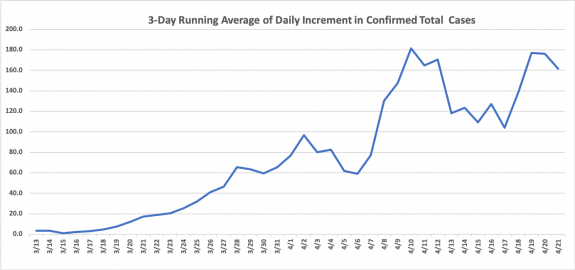Some weeks ago, when public health experts were still visible in Washington, a reasonable-sounding set of guidelines for opening up the national economy was offered. Sadly, the White House seems now to place all responsibility on the individual states with minimal if any major Federal help. It is walking away from, if not contradicting, the advice of the best public health scientists the nation has to offer. I fear that things are going to get interesting quickly and that we will land in an uncharted place somewhere between good and disastrous.
With individual states beginning to open up their economies in different ways and to different degrees, it is apparent that our ability to identify new cases of Covid-19 infection early, to do so in unexpected places, and to be willing and able to do something about it will be critical.
What is a “Mini-Update?”
The Wall Street Journal and other publications often offer a “Coronavirus Daily Update” sidebar with a simple list of Total Cases, Total Deaths, and Recoveries for both the United States and globally. When applied to a given geographic area, these three totals are important elements for predictive epidemiologic models. The fact that the numerous models offered today differ widely (or even turn out to be wildly wrong) confirms the truism that any model is no better than the assumptions it makes and the data available to it. By themselves, these high-altitude aggregate numbers are not fine-grained enough to help us predict the future for Kentucky. I do suggest there are some insights to be gained by examining them. In any event, the numbers are sobering.
What might we learn?
Readers of these articles may notice that I have been educating myself (and I hope some of you) about how we can best use the limited and imperfect epidemiologic data available to us to monitor the opening our economy. Are we are on the right path– or are we falling off the wagon? This is today the major healthcare challenge facing us as a nation. What might we learn from countries where the epidemic started earlier? How are we similar or dissimilar?

